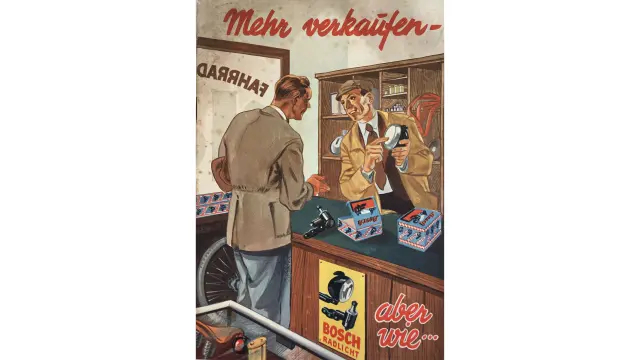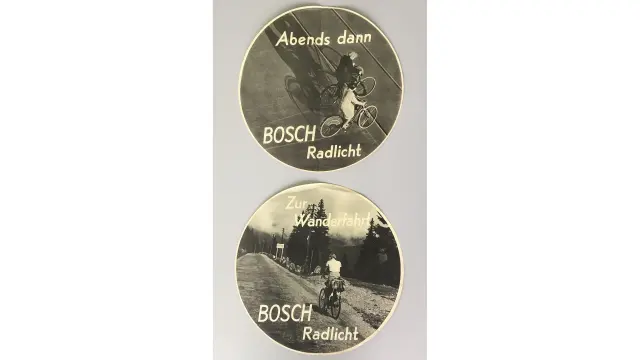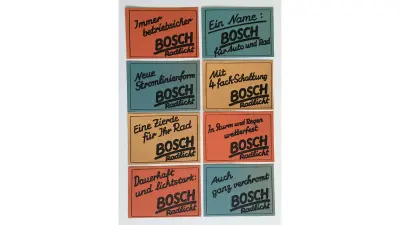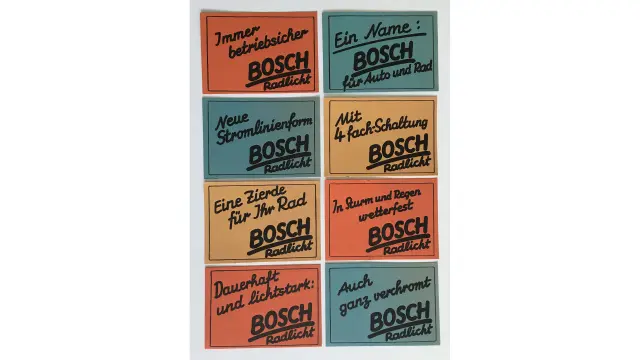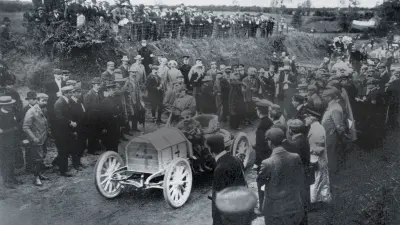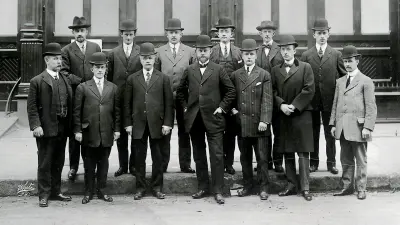Advertising at Bosch: From the “red devil” to advertising packages

Robert Bosch wasn’t one for banging the advertising drum too loudly. The quality of his products spoke for itself, after all. However, there was no way of doing without it either. That is why Bosch placed his first ads in the Stuttgart daily press in February of 1887 to draw attention to his newly founded company.
Following a large-scale advertising campaign in the spring of 1906 that significantly increased sales of Bosch’s main product at the time — the magneto ignition device — sales manager Hugo Borst further professionalized advertising at Bosch. Well-known commercial artists were commissioned to design posters. The second important building block was laid in the 1920s, with the implementation of the uniform Bosch image for window display design.
Looking for, and finding, new customers

By early 1906, sales manager Hugo Borst had been able to collect some 100 addresses of U.S. customers interested in the Bosch magneto ignition device. That spring, he mailed each one of them a promotional letter with an offer to order sample devices, while also taking out full-page ads in American motor magazines. Borst’s efforts were rewarded when he promptly received 30 orders. Head of the sales organization at the time, Gustav Klein, took it upon himself to visit, supply, and advise customers on site. Upon his return to Stuttgart, Klein brought with him orders worth over a million dollars. These were in large part due to his talents as a salesman, but also thanks to the advance advertising campaign.
“Our best advertising, our most resounding and successful advertising medium has always been our products.”
Entry into poster advertising
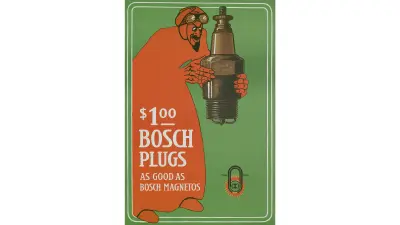
Advertising motif in the U.S.
The huge success in the U.S. convinced Bosch to rely on increased advertising measures going forward. Although “measures of secondary importance” in relation to the products themselves, advertising had now become indispensable “in modern sales operations.”
Around 1909, graphic artist Julius Klinger created the “red devil” advertising mascot. He was inspired by the famous Belgian racing driver Camille Jenatzy, who had won the 1903 Gordon Bennett Cup race with his audacious driving and Bosch magneto ignition.
It was the American customers who especially loved the red devil motif, and following the expropriation of the U.S. Bosch company as a result of the first world war, the competing American Bosch Magneto Corporation made its move and claimed the red devil for itself. Bosch refrained from further use of the motif to avoid confusion.
Bosch and the “Sachplakat”
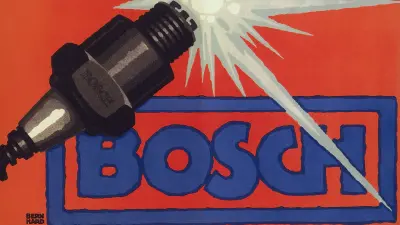
In 1912, commercial artist Lucian Bernhard received his first commission from Bosch, having been tasked with giving the company a new, uniform image. As the originator of the “Sachplakat”, Bernhard used a simple, clear visual and written language and reduced the poster to a depiction of the product with the product or manufacturer name.
The first motif designed by Lucian Bernhard was a candle with a bundle of rays and the red Bosch lettering running underneath. The following years saw a whole series of other Sachplakat designs for Bosch products.
New trademark
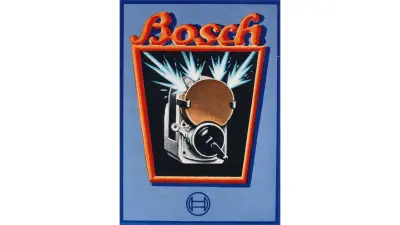
The new magneto ignition device poster
Following the first world war, the entire product range was furnished with the new Bosch trademark — the armature in a circle that is still valid today. Bernhard designed the accompanying advertising materials with the new image and wording, including newspaper ads, posters, letter supplements, and other advertising brochures.
A long overdue new magneto ignition device poster from Bernhard’s studio was also presented as a successor to the red devil in 1924. The advantages of the Sachplakat design were obvious: all that was shown was the product itself with the accompanying text limited to “Bosch” and “Robert Bosch.” That allowed it to be used in any country and language and helped save costs in the difficult reconstruction phase after the end of the war.
Overall composition window display
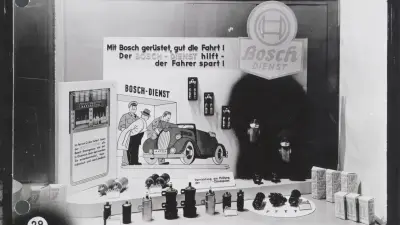
In addition to poster advertising, window display design became increasingly important over the course of the 1920s. Beginning in 1921, the company began building up a worldwide network of independent licensed workshops. In 1926, the workshops received the official “Bosch Service” designation and were given their own logo. The number of Bosch Services, as well as the company’s own salesrooms grew at a steady rate, making it all the more important to maintain a uniform, universally applicable Bosch image.
The Bosch in-house advertising agency, which was founded in 1926, took on the task and set up a scheduled customer processing system. Graphically designed, overall compositions were created for the window displays, emphasizing the Bosch-typical aesthetics of the technical products while simultaneously providing the most important information about the product.
Licensed workshops and authorized dealers regularly received design suggestions for their window displays. The recommendations made sure to take every eventuality into account, from setups for small and large windows, with close-up and long-distance effect, to the designs for the respective season. Material packages sent in the mail provided the dealers with new posters, cardboard displays, price tags, and stickers.
Eventually, the indications that early sales experience had given and that “careful market surveys in Germany and abroad” had gradually confirmed, became a certainty: only “scheduled customer processing” would ensure the long-term success of advertising measures. By the mid-1930s, “advertising campaigns, sales courses, dealer advertising through traveling representatives and customer magazines, as well as other means of modern advertising,” had all established themselves as standard avenues at Bosch.
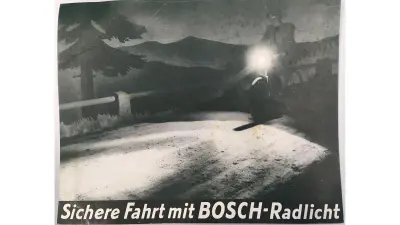
Author: Bettina Simon


